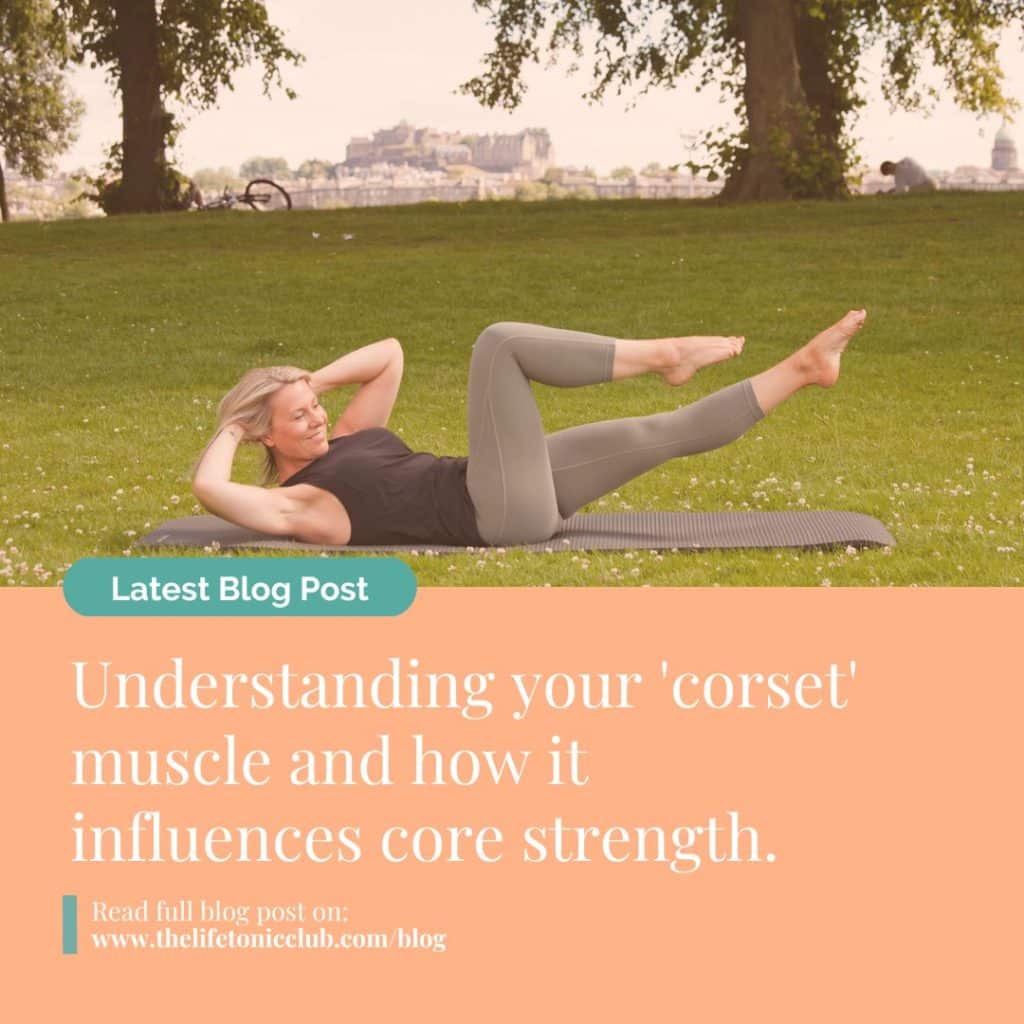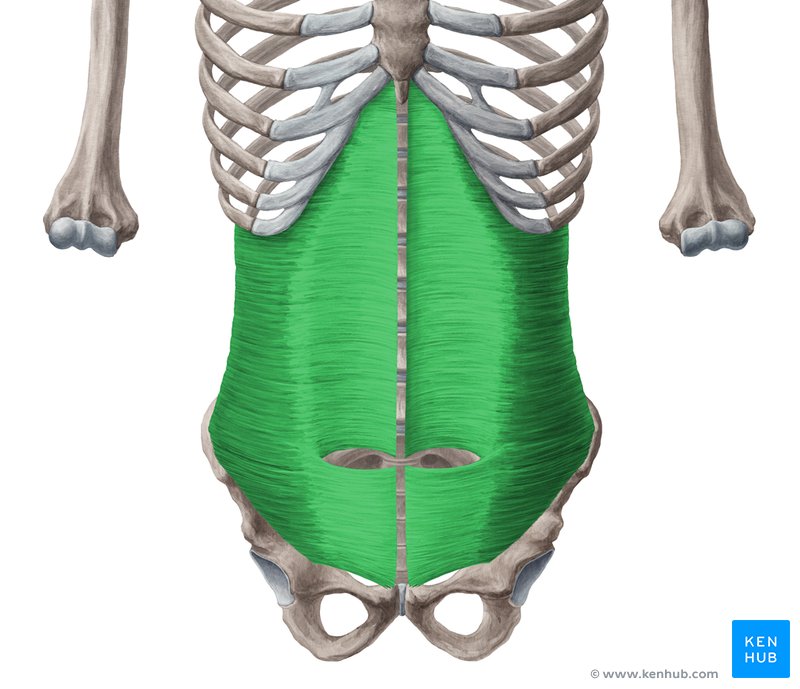
Introduction
If you’re new to pilates then there’s a few basic things you’re going to need know about including your all important abdominal muscles.
And whilst there is a few of them to consider, the focus of this blog post is to look specifically at the transverse abdominal; aka your corset muscle.
If you’re not new, then it never ever hurts to re-visit the basics. I often find in my teaching work that, if you’ve done pilates for a while you can become a bit complacent when it comes to the deep core work which means you end up rushing it and missing that all important deep core connection, so use this post as an opportunity to refresh your practice and to remind yourself to move mindfully.
I’ve also updated this post since it was first published back in 2021 as part of our 21 Days of Pilates Challenge so the chances are, you’ll learn something new regardless of what level you’re at in your journey.
Going deep
More often than not when we think about working our abs we think about the “6 pack” muscles like the rectus abdominis but rectus (plus others like the external obliques) are actually more superficial muscles.
One of the things that makes pilates unique is that we go deeper, focusing more on strengthening the intrinsic muscles of our deep core. Unlike the 6 pack muscles, these are the ones that we can’t necessarily see but have to connect with by ‘feeling’ them in action, and that important connection should never be rushed; it takes time and patience to develop and is a mindful practice in itself.
The main muscle we target is the transverse abdominal muscle (or TVA for short) in combination with your pelvic floor muscles (PFM), diaphragm and multifidus (spinal extensor).
Working together, it is these important muscle groups that have responsibility for providing stability for your pelvis and lumbar spine and it is this support system that often proves so helpful in managing and preventing things like chronic low back and pelvic pain.
Together, we want to train these important postural support muscles to help us with our everyday movements and activities like walking, sitting, driving, gardening etc but also get them to pull their weight whenever we make bigger demands of the body – like a long run or heavy lifting – effectively making them more responsive to the demands we place on our bodies.
What is the transverse abdominal muscle?
Your TVA is the deepest of the abdominal muscles. As you can see, it’s a pretty big muscle that sits deep to the spine. You’ll find it on the front, back and side of your abdomen, extending between your ribs and pelvis. It’s often likened to a ‘corset’, because it draws in 360 degrees to wrap around your waist , just like a corset, and provides postural support (its primary role), whilst also helping to contain and support the organs located inside your trunk.
If you put your fingers just inside your hip bones and then breath out slowly (see this blog post for some help here), then you should feel the TVA activate and the muscle start to draw down or ‘wrap’ around your waist; some even describe the sensation as ‘hollowing out’.

Support to the Linea Alba
If you’ve had a baby, or any form of abdominal surgery, then it’s probably quite important to know that the transverse abdominal muscle attaches to what’s called your linea alba (please note, this is just one of it’s many attachments).
The linea alba is a tendon that runs vertically from your ribs to your pelvis and separates the right and left sides of your superficial rectus abdominus muscle, and your pubic symphysis joint.
The linea alba tends to lose its strength during pregnancy and can also be impacted by abdominal surgery. I’ve seen this in the case of my mum who had two lots of abdominal surgery for colorectal cancer in 2021. Restoring strength to her TVA through pilates has been an important way to restore integrity to her linea alba and overall core strength (the same benefit can be said if you’ve had a baby).
Adding in the pelvic floor muscles and diaphragm
Once you’re used to the sensation of connecting to your TVA, then you can start to think about gently incorporating your pelvic floor muscles more actively, which also happens on your exhale (that’s your diaphragm working), which will also bring in your multifidus.
And so you can start to see the picture of how your core muscles work together to create a support system for you.
Make it mindful
Take your time trying to find this connection, it’s going to make up the core of your overall pilates practice (no pun intended) and for me, lying in relaxation position and practising ‘abdonimal hollowing’ is a big part of my mindfulness practice and a great way to often get into your parasymapthic nervous system because it’s so closely linked to your breath.
Often what I see in teaching are clients that rush it and therefore miss picking up the pelvic floor muscles (plus that golden opportunity to relax and calm your nervous system). Your PFM are a primary stabiliser of your deep core system and work hand in hand with your TVA (and of course your diaphgram). Consider them the ‘dream team’ of your core.
As hormone changes effect the pelvic floor at midlife, the more we get in touch with our pelvic floor the more we care able to decrease tightness, increase strength and regulate pressure by understanding this important connection.
Things to look out for when engaging your TVA….
If you notice you are pushing your belly forward or it’s popping up and making a little pooch, you are most likely missing your TVA connection so take your time to exhale and think of zipping up all the way from your pubic bone to your belly button, making sure to gentle incorporate your pelvic floor and imagine that corset wrapping or drawing in and around your waist as you breath out.
When you engage your abs like this, you only need to do a few repetitions to get good, quality work and to really develop functional core strength – over just merely doing ‘ab’ work.
Ultimately, this is what delivers better (faster) results, in a shorter amount of time and hopefully you’ll be able to feel the benefits long after you’ve left the mat.
———————
Do you know just how much your TVA influences your core strength? Let me know!
I hope you’ve found this post helpful and learned a little something to take into your own practice. I’ll see you on the mat soon!
